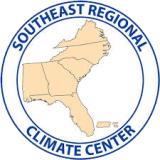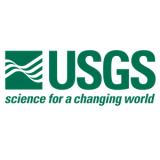Southeast Climate Monthly Webinar: August 22, 2023
This past month was a ‘Tale of Two Temperatures’ in the Southeast, with below-average temperatures across the interior of the region, while the southern tier and the Caribbean remained hot and humid. Many locations in Florida recorded their warmest month on record in July. Precipitation was also variable. Drought conditions improved across Tennessee and northern Alabama, persisted on St. Thomas and St. Croix, emerged in eastern North Carolina and St. John, and intensified across the western Florida Peninsula and northwestern Puerto Rico. High temperatures and spotty storms are leading to an expansion of abnormally dry conditions across several states. Streamflows are mostly near normal across the region and typically are in their summer low period this time of year. The exception is the Florida Peninsula, where streamflows ramp up during the wet season into the tropical season, though the Florida wet season has not been as pronounced this year so far, especially across the western Peninsula.
Looking Ahead: Over the next two weeks, temperatures are expected to be above average across the southern tier of the region and below average across the northern tier. Drier-than-average conditions are expected across the interior of the region, with wetter-than-average conditions along the East Coast. Warm weather is expected across the entire region during weeks 3 and 4, with equal chances of above- and below-average precipitation. River flood risk through the next 3 months is forecast to be near what is typical for the interior Southeast river systems, with possibly some increase in rainfall and streamflow above what is typical in mid to late November. El Niño conditions are expected to strengthen. We are entering the most active period for tropical activity in the Southeast.
Check out this month’s special presentation, “Future Water Availability and Streamflow Characteristics in the Southeastern U.S.” from Jacob LaFontaine at the USGS South Atlantic Water Science Center.
About This Webinar
The Southeast Climate monthly webinar series is hosted by the Southeast Regional Climate Center, the National Integrated Drought Information System (NIDIS), and the NOAA National Weather Service. These webinars provide the region with timely information on current and developing climate conditions such as drought, floods, and tropical storms, as well as climatic events like El Niño and La Niña. Speakers may also discuss the impacts of these conditions on topics such as agriculture production, water resources, wildfires, and ecosystems







